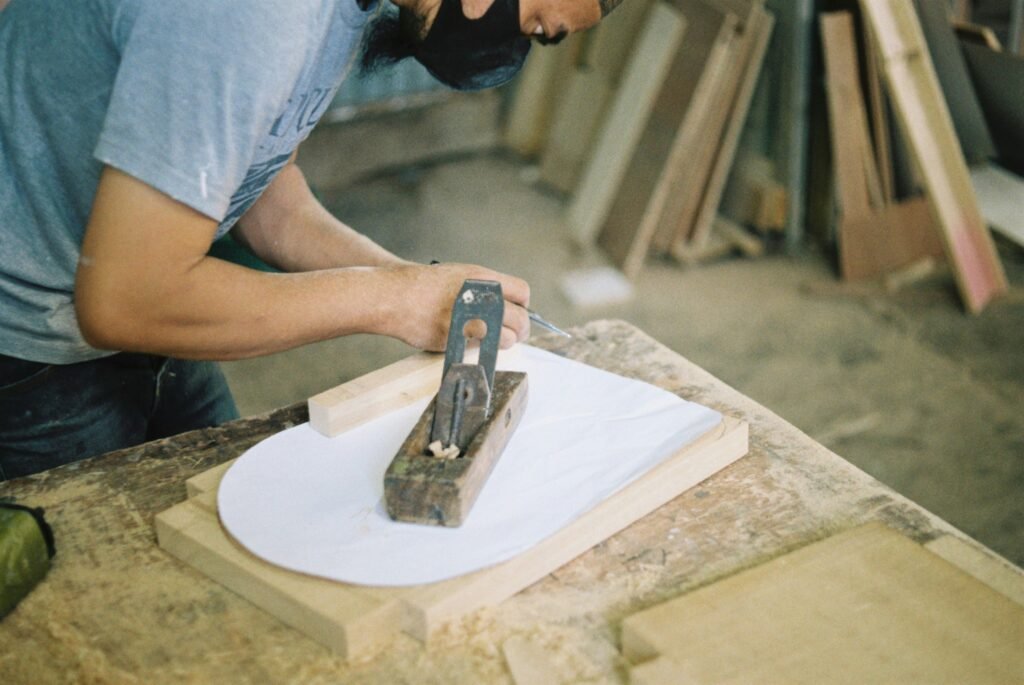Woodworking is a time-honored craft that blends precision, creativity, and technical skill. Whether you’re a seasoned craftsman or a novice hobbyist, there’s something magical about transforming raw wood into a functional or decorative piece. In this guide, we’ll explore the essential tools, techniques, and best practices that make “great woodworking” possible.
Essential Woodworking Tools for Every Workshop
To create great woodworking projects, you need the right tools. The combination of hand tools and power tools is essential for every workshop, enabling both beginners and experts to execute various techniques with ease.
- Hand Tools: Classic tools like saws, chisels, and planes are vital for precise cutting, shaping, and smoothing wood. A high-quality set of chisels and a block plane can handle most fine woodwork tasks.
- Power Tools: For larger projects, power tools like circular saws and routers are invaluable. These tools speed up the cutting and shaping process and provide accuracy when dealing with tougher materials.
- Measuring Tools: Tools such as tape measures, squares, and calipers ensure accuracy in your work. Always measure twice and cut once—this timeless advice can save you from costly mistakes.
Safety equipment is just as important as the tools themselves. Always wear protective eyewear, hearing protection, and gloves to ensure a safe working environment.
Best Types of Wood for Woodworking Projects
Understanding the types of wood you’re working with is crucial for creating durable and visually appealing projects. Wood is generally divided into two categories:
- Softwoods: These include pine, cedar, and spruce. Softwoods are easier to work with, making them great for beginners. They are also less expensive but tend to be less durable than hardwoods.
- Hardwoods: Oak, maple, and walnut are common hardwoods used in high-quality woodworking projects. These woods are denser, offering more durability, but they are harder to work with and often more expensive.
Selecting the right wood depends on the project’s purpose and aesthetic. For furniture that needs to withstand wear and tear, hardwoods are a better choice. For decorative items or small projects, softwoods may suffice.
Mastering Woodworking Techniques
To excel in woodworking, mastering essential techniques is key. Here are the foundational methods that every woodworker should be familiar with:
- Cutting and Sawing: Cutting wood accurately is the cornerstone of any project. Tools like table saws and jigsaws help create precise cuts. Always align your cuts with the grain of the wood for better stability and aesthetic.
- Joinery Techniques: Wood joints, such as dovetails, mortise and tenon, and biscuit joints, are vital in woodworking. They provide strength and longevity to furniture without the need for nails or screws. Properly executed joinery can make a project not only functional but also visually impressive.
- Sanding and Finishing: Sanding smooths out rough edges and prepares the wood for finishing. Both hand and powered sanding tools can be used depending on the project. Applying a finish (such as varnish or oil) protects the wood and enhances its natural grain.
Step-by-Step Guide to Creating Your First Great Woodworking Project
Starting with a simple woodworking project is a great way to build your skills. Let’s walk through creating a basic wooden bench:
- Materials: Choose a hardwood like oak for a durable finish. Gather your wood, screws, wood glue, and finishing materials (varnish or paint).
- Tools: You’ll need a circular saw, clamps, a sander, and measuring tools.
- Step-by-Step Process:
- Cut the Wood: Measure and cut your bench components—legs, seat, and supports—ensuring all cuts are straight and accurate.
- Assemble the Frame: Use wood glue and clamps to join the legs to the seat. Reinforce with screws for added strength.
- Sand the Surfaces: Use a sander to smooth all surfaces, starting with coarse sandpaper and finishing with fine grit.
- Apply Finish: Choose a finish that highlights the wood’s natural grain. Apply in multiple coats, sanding lightly between each coat.
Finishing Touches: Varnishes, Stains, and Paints
Finishing is what brings a woodworking project to life. There are two main types of finishes:
- Penetrating Finishes: These include oils like tung oil or linseed oil, which seep into the wood and harden, providing a natural look and feel.
- Surface Finishes: Paint, varnish, and polyurethane provide a hard outer layer that protects the wood from moisture and wear. These finishes are ideal for outdoor furniture or high-traffic surfaces.
When applying any finish, make sure to work in a well-ventilated area and allow proper drying time between coats. This ensures a durable and beautiful result.
Advanced Woodworking Techniques
For those ready to take their woodworking to the next level, here are some advanced techniques:
- Wood Turning: Using a lathe, you can create rounded objects like bowls or intricate furniture legs.
- Inlay Work: This technique involves embedding contrasting materials (like other types of wood or metal) into a piece for decorative purposes.
- Router Jigs: These jigs allow for more complex cuts and patterns, expanding your creative options.
Tips for Great Woodworking Projects
- Measure Twice, Cut Once: This simple rule will save you time, effort, and materials.
- Choose the Right Wood: Each type of wood behaves differently. Always select wood that suits your project’s needs.
- Keep Your Tools Sharp: Dull tools not only make the work harder but can also result in poor-quality cuts.
Common Mistakes to Avoid
- Over-Sanding: Be careful not to sand away too much material, especially at the edges.
- Ignoring Wood Grain: Always consider the direction of the grain when cutting or sanding to avoid splintering.
- Improper Clamping: Poor clamping can lead to misaligned joints and weak structures.
FAQs
What are the most important tools for woodworking?
The essential tools include a saw, hammer, chisel, measuring tape, and power tools like a router and sander.
What is the best type of wood for beginners?
Softwoods like pine or fir are easier to work with for beginners and are generally less expensive.
How do I prevent wood from warping?
To prevent warping, store wood in a dry environment and always seal it with a finish to protect against moisture.
How can I start woodworking without expensive equipment?
Start with basic hand tools and small projects. As you gain experience, you can invest in more specialized equipment.
What are the most common woodworking mistakes?
Common mistakes include incorrect measurements, using the wrong wood, and not securing joints properly.
Conclusion: The Joy of Great Woodworking
Woodworking is a rewarding hobby that allows you to create beautiful and functional pieces. Whether you’re building a simple bench or crafting intricate furniture, the skills and techniques you learn along the way will help you grow as a woodworker. So, grab your tools, pick your wood, and start creating your own woodworking masterpiece!



